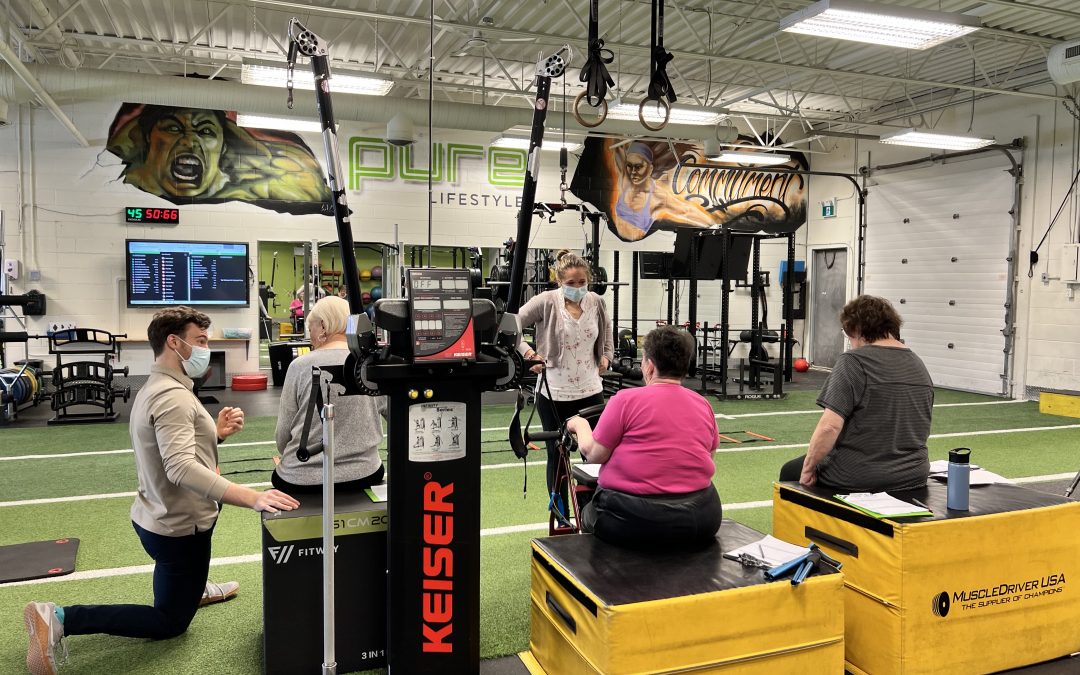Train to Run
Most of us learn to run from a young age. We play tag and chase our friends around and then naturally transition to sports involving more of a skilled task, such as kicking a soccer ball or bouncing a basketball while we run. As we grow up, we pursue various sports, all of which involve practices where we repetitively perform the same drill, improve our skill set, and transfer these skills into a game setting. For example, volleyball players practice hitting a volleyball, transition to various hitting drills, then scrimmage, all to prepare them for various game scenarios. It is a logical transition, where we progress from learning a variety of skills to using them in a competitive atmosphere.
Running has always been the exception to this rule, because everyone already knows how to run. However, do they actually know how to run or are they just predisposing themselves to injury a few weeks later?
As physiotherapists, every spring we see an influx of clients who have decided to take up running. They usually figure it’s a quick and inexpensive way to spend time outside and get in shape quickly for summer, and I don’t disagree with this. However, what they often fail to mention is that they don’t strength train and haven’t run for a very long time, sometimes since childhood. Therefore, they often wind up injured in our office only a few weeks after starting.
When we run, our bodies act as a kinetic chain, a transfer of forces from the ground up. Often the weakest point of the kinetic chain is where runners fail, and this “weakest point” isn’t the same in everyone. Some individuals fail from improper footwear choices combined with improper footfall patterns; some fail from training errors involving increasing volume and speed too quickly, and many fail from hip and core instability. While footwear and training errors can also be addressed at physiotherapy, we are going to discuss the importance of core and hip stability in runners and how corrective exercise can help address the problems caused by lack of it.
Core
When running, the core works as an integrated unit made up of muscles that help control the movement of your trunk, pelvis, low back and hips. Its role is to keep your trunk stable. When conditioned, a strong core allows you to run more efficiently and prevents various low back and leg injuries associated with poor running biomechanics. It is important for runners to train their core with an endurance focus, especially when training for longer distances.
Numerous runners train their core, however, they often train it in a stable position, such as a plank. While this is a great starting exercise, the purpose of the core is to be able to react to unstable situations, and the plank position (forearms and toes on ground with body straight) involves all four limbs touching the ground. Therefore, lifting an arm or a leg off the ground from this position, while maintaining level hips, will present as more of a challenge to the body’s core stability. It is also important to strengthen various movement patterns to work together. For example, when running, your latissimus dorsi muscles (back muscles) on one side of your body work with your opposite gluteal muscles, therefore it is important to strengthen this movement pattern by working these muscles simultaneously.
Hips
While running, the job of the hips is to keep your body level horizontally. One muscle that is extremely important in doing so is your gluteus medius (glute med), which is a smaller muscle on the upper aspect of your lateral hip. This muscle is a hip abductor, but works as a dynamic stabilizer to control thigh/knee movement while running. When your glute med is working properly, you should be able to stand on one leg without having your other hip drop down during its swing (non-weight bearing) phase of running. However, when it isn’t working properly, your swing leg will drop due to lack of control of your stance (weight bearing) leg. This causes excessive hip movement, decreased running efficiency, and often injury. When your hip drops during running, the kinetic chain has to compensate elsewhere. This influences the position of the knee, causing it to drop inward or bend more to compensate for the lack of space left for the swing leg to clear the ground.
When your glute med isn’t firing properly, the tensor fasciae latae (TFL), a smaller hip muscle, which assists in stability, will kick in to compensate. However, the TFL isn’t strong enough to assist on its own, so the iliotibial band (ITB), which runs down the lateral leg to the outside of the knee, will tighten up in attempt to help stabilize. The result? You are using the ITB, a static stabilizer, in attempt to achieve dynamic stability and it’s resulting in injury. We see numerous runners come in who are repetitively foam rolling their ITB with little to no improvement, and it’s usually because the ITB isn’t the problem and their injury is stemming from a weak glute med! There are many exercises to strengthen glute med, but it is essential that they be performed correctly. If you are not working to isolate glute med, you will be strengthening a dysfunction and further encouraging TFL and ITB to kick in.
In summary, just like any other sport, it is important to train to run. Strength training can improve your running performance as well as play a huge role in injury prevention. We often treat clients when they are already injured, but we are also happy to assist by assessing your potential for injury and providing you with corrective exercises before running results in injury. Let the team at Pure Lifestyle help you keep running all season long!
Aynsley Clayton







